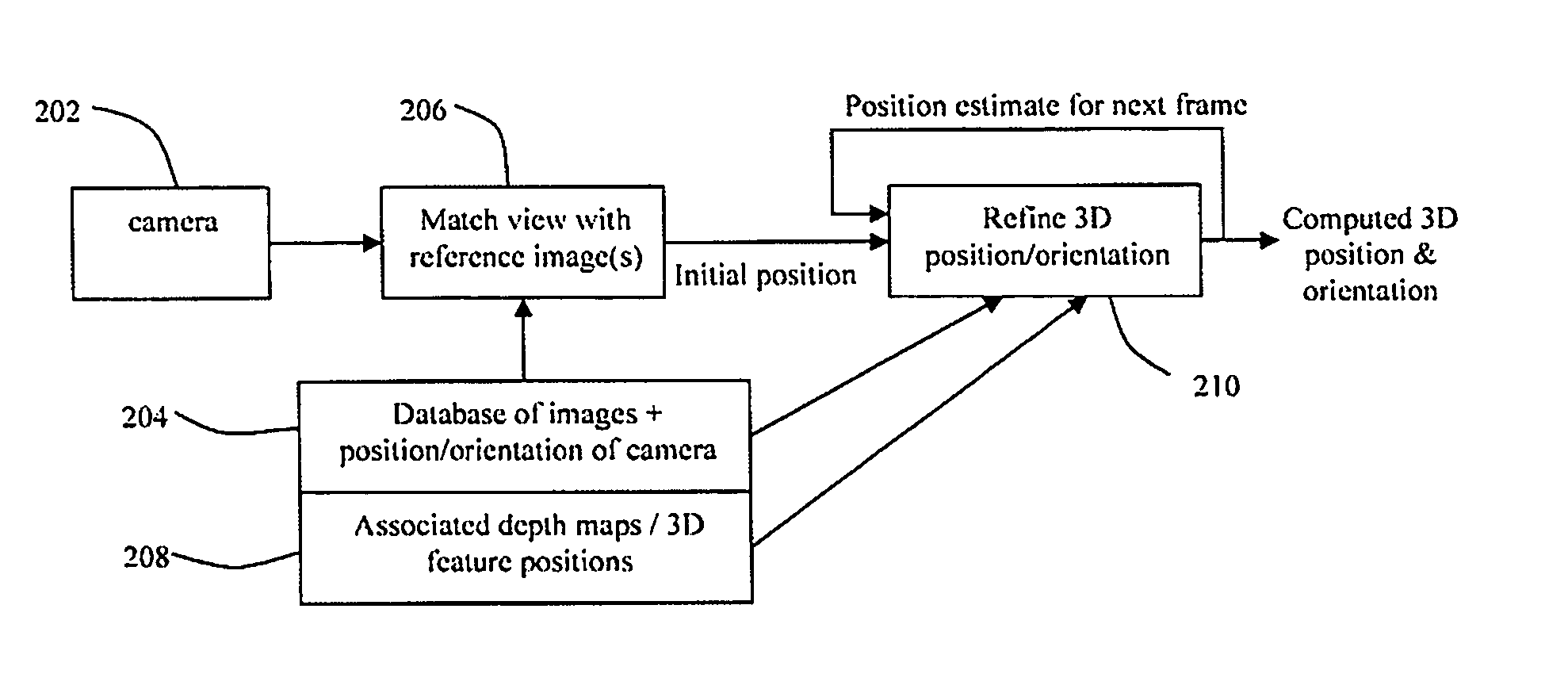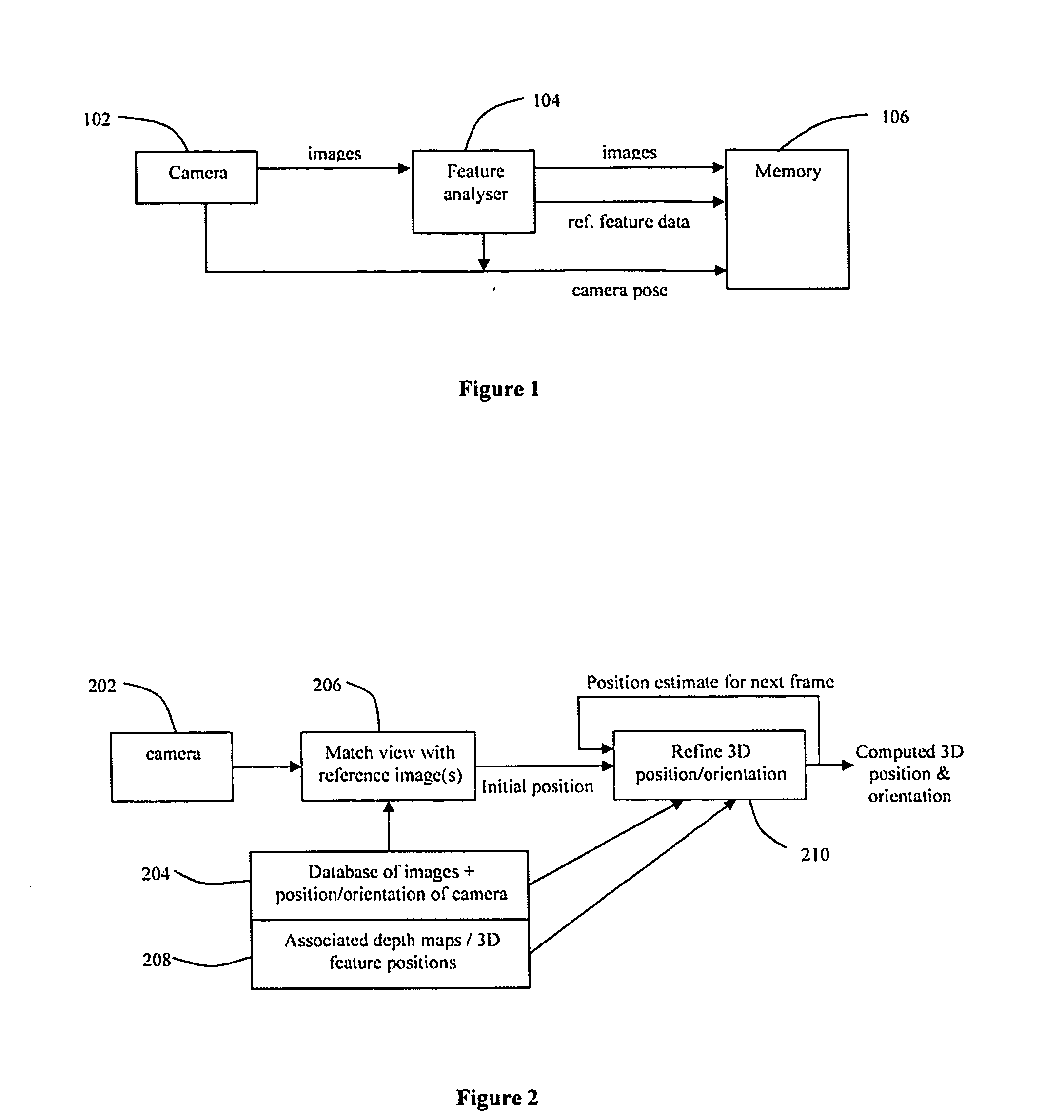System and method for position determination
a position determination and position technology, applied in the field of position determination, can solve the problems of high and unacceptable noticeable, inconvenient to use, and high visual perceptibility
- Summary
- Abstract
- Description
- Claims
- Application Information
AI Technical Summary
Benefits of technology
Problems solved by technology
Method used
Image
Examples
Embodiment Construction
[0014] Creating a 3D model of a scene is a conventional method of estimating the required information. Theoretically it is logical and easy to understand. In practice, however, we have found that the limitations of accuracy with which the model can be created and used in reality, as well as the manual and computational effort, make this problematic for the purpose of virtual production. Rather than create a 3D model of the scene, we propose that a series of reference images of the scene are captured and stored (106 of FIG. 1) before the tracking system is used, covering a range of views that are representative of those that the camera will be expected to see during use. These images could either be captured with a camera (102 of FIG. 1) similar or identical to the camera that is to be tracked, or could be captured with a high-resolution stills camera. Such a camera fitted with a wide-angle lens provides a convenient way of rapidly acquiring a set of images that contain a high level ...
PUM
 Login to View More
Login to View More Abstract
Description
Claims
Application Information
 Login to View More
Login to View More - R&D
- Intellectual Property
- Life Sciences
- Materials
- Tech Scout
- Unparalleled Data Quality
- Higher Quality Content
- 60% Fewer Hallucinations
Browse by: Latest US Patents, China's latest patents, Technical Efficacy Thesaurus, Application Domain, Technology Topic, Popular Technical Reports.
© 2025 PatSnap. All rights reserved.Legal|Privacy policy|Modern Slavery Act Transparency Statement|Sitemap|About US| Contact US: help@patsnap.com


